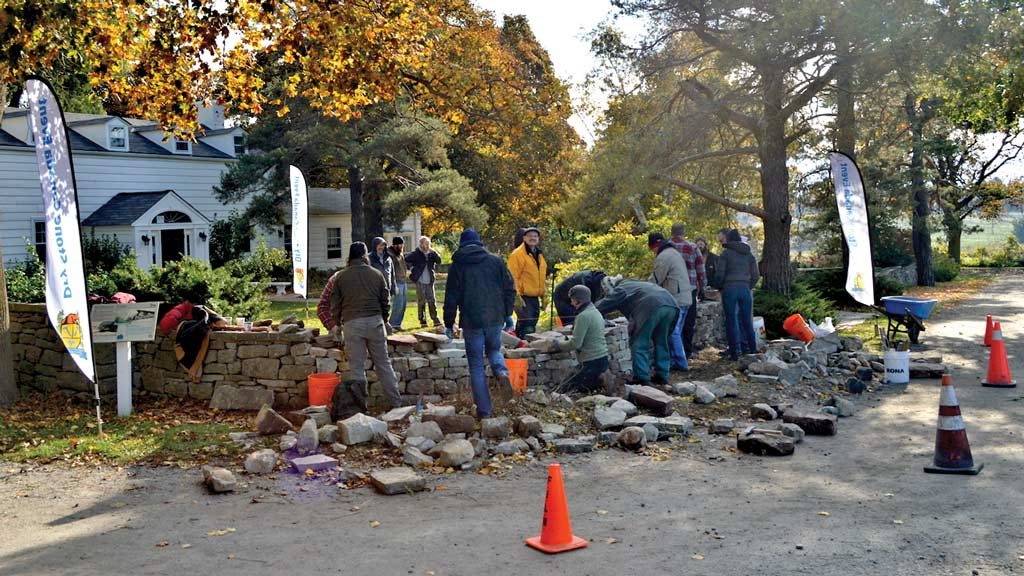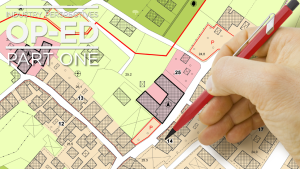Not only is the ancient craft of dry stone wall construction been kept alive in Ontario, it continues to grow and flourish in large part through the efforts of the non-profit Dry Stone Walling Association of Canada — often referred to as Dry Stone Canada.
“We promote many aspects of stone work, whether it is building walls, bridges, or unique artistic features. We call ourselves wallers, but that is not all we do,” says Bill Jeffers, the association’s treasurer and a member of its board of directors.
Wallers are not professional stone masons, although some masons are members, he points out. As the name implies, dry stone wall construction does not involve the use of mortar. Rather, the erection of walls, bridges, and other structures is based on “the force of gravity and friction”.
There are some basic rules that are generally followed and which are covered in a 13-page How to Build a Stone Wall brochure the association publishes.
It is the local stone in the area where construction is taking place which dictates how a structure is to be built. If the objective is a stylish look, then more of the stone will have to be shaped to create tighter joints. But dry stone walls can be built without using tools and just relying on the shape of each stone to maximize the fit, Jeffers says.
Dry stone wall construction has been practised in the United Kingdom and other parts of Europe for centuries as a way of clearing land and then using the excavated stones to build structures, as well as delineating property lines, he says.
Similarly, early 19th settlers in Ontario also laboured to remove fieldstone from farmland and the legacy of those efforts are the stone barn foundations and some stone fences which can still been seen in rural parts of the province, says Jeffers.
It was the United Kingdom that a group of wallers in southern Ontario looked to when they came together in 2012 to discuss the possibility of creating an association similar to the DSWAUK (Dry Stone Walling Association of the United Kingdom). The Canadian-born version was officially created the same year.
“We now have about 60 general members who are quite active in the stone community. And another 40 are non-active members.”
In keeping with its core mission of promotion and education, the association sponsors training workshops such as one this past May in Merrickville, Ont. where the participants built a wall along the Rideau Canal.

The workshops are conducted by instructors who have been certified under either the DSWAUK or the Dry Stone Conservancy of Kentucky certification programs by third-party testers.
“We have considered creating our own programs but saw no sense in ‘reinventing the wheel.’ ”
In addition to the workshops, association members have built a number of civic structures in partnership — and at the request of — local sponsoring organizations. Some of the building projects have been part of larger festivals such as the 2015 Irish Canadian Walling Festival on Amherst Island near Kingston, Ont. where association members built an Irish-style wall.
Through the efforts of waller John Scott, a heritage masonry instructor at Algonquin College’s Perth campus, the association was invited to build a pedestrian bridge over a tributary of the Tay River in Perth in 2016 as part of that town’s 200th anniversary celebrations.
Certain sections on the bridge’s sides, with more decorative stones, had been prebuilt by the college’s heritage masonry students.
Erection of the 14-metre-long, three-metre-wide (46-foot-long, 12-foot-wide) structure by association members and wallers from the United States, Scotland, and Ireland took three days.
“Just about every single piece of stone in the bridge needed to be shaped (chiseled) to ensure nice tight joints. By the end of the weekend, we were able to remove the support frame under the bridge. After the festival a smaller crew of eight wallers completed the parapets,” Jeffers says.
Although the actual construction time was fairly short, it was preceded by months of planning between the association and the town.
In 2017 the bridge was recognized by the Canadian Society for Civil Engineering as its first National Civil Engineering Demonstration Site to recognize the origins of bridge building in Perth, he says.
In September the association will be returning to Amherst Island to extend a curved wall which it started a few years ago and also to build a seating area using stone from the island, as well as incorporating some very large pieces of granite that were part of an original pier, says Jeffers.
Working with stone is “satisfying, if not transformative,” says another association board director member, Doug Bell, in explaining the passion and commitment of wallers.
“It’s as much mental as it is physical. Each stone is different and you have to decide which stone goes where and why.”











Recent Comments
comments for this post are closed